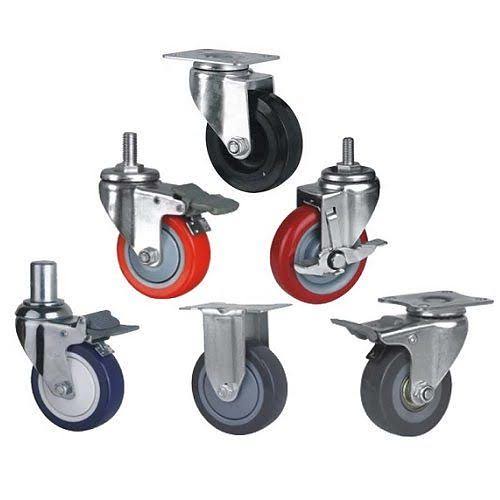Rigid Caster Wheels Vs. Swivel Caster Wheels – Which is the Right Choice for Your Project?
Industrial casters are available in various designs, sizes, materials, and load capacities. Many also have swiveling, braking, and locking options.
Your chosen configuration depends on how much weight you need to move and over what distances.
Rigid Casters Versus Swivel Casters
When working with carts, wheelbarrows, and other material handling units, you will need the proper wheels and casters to get the job done. With various sizes, capacities, and designs available, choosing suitable casters can be challenging. Several factors are considered, such as the type of environment, frequency of use, average load weight, and how far you plan to travel.
To assist in the decision-making process, it’s essential to understand both types of casters and how they differ. Rigid and swivel casters are available in many configurations, including brakes and locking options.
The critical difference between rigid and swivel casters is that a swivel caster can rotate 360 degrees, making it ideal for transporting loads that need to change direction quickly (such as carts). A rigid caster wheel is perfect for applications that require straight-line movement.
Rigid casters come in several different materials, sizes, and configurations, so there’s sure to be one that suits your needs. If you need help deciding which one to choose, it’s best to consult an expert to help you find the ideal caster for your application.
Swivel casters are known for their ease of maneuverability in tight spaces. They’re commonly used on shopping carts to allow the front casters to align with the rear casters and roll down aisles in a straight line. They also work well when turning the vehicle, as the swivel design allows for a smooth rotation and reduces the shifting of the load.
To improve the overall performance of a swivel caster, many manufacturers now use a “swivel-on-swivel” design that includes two swivel sections stacked on each other. This enables the first swivel section to achieve a longer swivel lead than traditional single-swivel casters. This increases the number of swivel rotations and decreases the force needed to initiate them, which reduces operator fatigue and the risk of injury.
Advantages of Rigid Casters
Rigid caster wheels are ideal for industrial equipment and carts that must be able to carry heavy loads. These casters limit movement to straight-line travel and don’t allow for directional steering, which makes them more efficient and safe to use than swivel wheels. Rigid casters also tend to be cheaper than swivel casters.
They also tend to be more durable since they don’t require the complex moving parts in swivel caster wheels. Their design is simple, with two steel guides that position the wheel between them. These yokes are then connected to a steel wheel axle, secured by a bolt head on one end and a nut on the other. The wheel is then inserted into this assembly, and the caster undergoes quality control testing to ensure it can support a large amount of weight and won’t break under pressure.
You may need to move various items using a caster, from furniture to shopping carts and everything in between. For example, shop carts can have a lot of shelves and drawers, so they’re typically quite heavy. They also need to be able to move quickly and easily in a straight line, which is why rigid casters are the best option.
Sometimes, you may brake all casters simultaneously so that none can move simultaneously. This is possible with a central lock caster with a mechanism on the vertical shaft that engages a ring encircling each swivel caster, which then lowers and presses down onto the wheel to prevent both swivel and shaft rotation.



